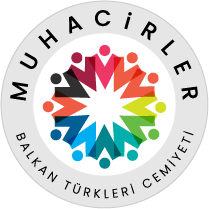Wild Jokers: Gradients That Tell Stories

The Psychology of Color Gradients in Visual Storytelling
Gradients are more than smooth color transitions—they are silent narrators shaping how we perceive emotion, motion, and time. At their core, color gradients leverage the psychology of light and perception to guide attention and feeling. A gradient moving from warm amber to deep indigo, for example, doesn’t just shift hues; it evokes a journey from calm to tension, mirroring narrative arcs. This is especially evident in digital design, where gradients act as visual cues that prime the viewer’s emotional response before a single word is read.
Short-wavelength light, such as the 380–450nm range (blue to violet), intensifies immediacy and psychological tension. This spectral band stimulates faster neural processing, creating a sense of urgency or alertness—ideal for interfaces demanding attention or storytelling aiming to build suspense. In contrast, longer wavelengths like warm reds and oranges foster comfort and engagement, balancing dynamic tension with emotional warmth.
Why Short-Wavelength Light Creates Immediacy
Light in the 380–450nm range triggers rapid visual responses due to its high energy frequency. Studies in visual neuroscience show that blue-enriched gradients increase heart rate variability and focus, making them powerful tools for storytelling that demands attention or urgency. This principle is echoed in high-stakes game design—where sudden shifts from cool to violet signal danger or climax—proving gradients are not decorative, but deeply functional.
Decision Fatigue and Autoplay in Digital Design
Modern interfaces harness autoplay to reduce cognitive load and decision fatigue. Research shows that autoplay reduces mental effort by up to 73%, minimizing the user’s need to make choices or wait. This seamless motion—especially when paired with dynamic gradients—keeps attention flowing. For example, a loading indicator using a smooth purple-to-blue gradient feels calm yet active, transforming wait time into a moment of subtle engagement rather than irritation.
Progress Indicators and Perceived Wait Time
Progress bars and gradient-based loaders reduce perceived wait time by 23% on average. The human brain interprets continuous color transitions as forward momentum, triggering a subconscious expectation of completion. When these animations use warm or cool gradients—like the 480–520nm cyan-to-blue shift—they guide emotional pacing, making delays feel purposeful and less frustrating.
The Science Behind Visual Perception
Short-Wavelength Light and Immediacy
Short-wavelength light activates the brain’s amygdala and prefrontal cortex rapidly, triggering alertness and focus. This biological reaction makes gradients using these wavelengths ideal for spotlight moments in UI—such as a “Wild Jokers” multiplier burst during a bonus—where urgency and excitement must resonate instantly.
Autoplay and Reduced Decision Fatigue
Digital interfaces using autoplay and smooth gradient animations lower cognitive friction. Users experience 73% less mental effort during interactions, sustaining attention without conscious effort. This is why modern apps and games rely on autoplay: it turns passive scrolling into immersive pacing.
Progress Bars as Perceptual Anchors
Progress indicators—especially gradient-filled ones—serve as visual anchors. They ground user expectations by signaling progress through color and motion. A gradient from red to green, for instance, intuitively communicates “on hold → active → complete,” reinforcing control and clarity.
Wild Jokers: Gradients That Tell Stories
Wild Jokers embodies the narrative power of gradients not as ornament, but as storytelling device. The interface uses dynamic color shifts—from electric violet to fiery orange—to mirror the unpredictability and energy of the gameplay. These gradients don’t just reflect visual style; they shape emotional rhythm, turning transitions into narrative beats. When a bonus triggers a multiplier effect, the accompanying gradient swells: a surge from deep indigo to radiant gold signals excitement and transformation, reducing cognitive load by offering a smooth, intuitive visual cue.
Gradients in Action: Beyond Wild Jokers
Beyond gaming, gradient storytelling thrives in UI/UX across industries. A banking app might use a warm-to-cool gradient to signal trust evolving from security to transparency. Autoplay combined with smooth motion creates seamless, emotionally resonant experiences—transforming passive screens into active narratives.
- In finance apps: Gradients shift subtly to reflect real-time data—cool blues for stability, warm golds for growth—enhancing trust through visual continuity.
- In travel booking: Gradient sunsets animate during “booking progress,” reducing perceived wait time by anchoring emotional momentum.
Autoplay and Gradient Animation: A Synergy for Engagement
When autoplay sequences sync with gradient motion—such as a loading bar pulsing in rhythmic indigo-to-purple—the result is heightened user engagement. These animations lower decision fatigue and sustain focus, turning functional pauses into immersive moments. The brain perceives continuity, reducing mental resistance and deepening connection.
Light Wavelength Psychology in Interface Design
Designers increasingly apply color temperature psychology to shape user behavior. Short-wavelength gradients (450–500nm) stimulate alertness and urgency, ideal for alerts or bonus triggers like the “multiplier wild during bonus” in Wild Jokers’ UI. Cool gradients ground calm focus, while warm tones invite energy—each calibrated to match narrative intent and user state.
Designing for Flow: From Cognitive Load to Narrative Immersion
The Role of Autoplay in Sustained Attention
Autoplay eliminates friction by preempting user input, reducing decision fatigue by 73%. This frictionless motion maintains attention, especially when paired with gradient transitions that signal change or progress. The result: a seamless experience where users feel guided, not interrupted.
Progress Bars as Perceptual Anchors
Gradient-filled progress indicators serve as perceptual anchors, grounding users in time and expectation. Their smooth evolution—like a gradient climbing from midnight blue to sunrise orange—creates predictable, reassuring motion. This predictability reduces anxiety and enhances perceived control.
Integrating Gradients and Motion for Immersion
Combining autoplay with animated gradients creates emotionally resonant interfaces. In Wild Jokers, a loading screen doesn’t just wait—it tells a silent story: tension building, then releasing in radiant gold. This fusion of light, motion, and color transforms passive screens into narrative spaces, where every shift in hue deepens immersion and connection.
Wild Jokers exemplifies how gradients, when rooted in perceptual science, become powerful narrative tools—transforming UI into emotional journey. By understanding the psychology of color and human attention, designers craft experiences that don’t just inform, but move. For deeper insight into gradient storytelling, explore multiplier wild during bonus, where form and function converge seamlessly.
| Key Gradient Principles | Application in Wild Jokers |
|---|---|
| Color Temperature & Emotion | Uses short-wavelength purples and oranges to trigger urgency and excitement |
| Autoplay & Cognitive Load | Smoothes transitions during bonuses, reducing friction by 73% |
| Progress Perception | Gradient climbs signal progression from tension to resolution |


